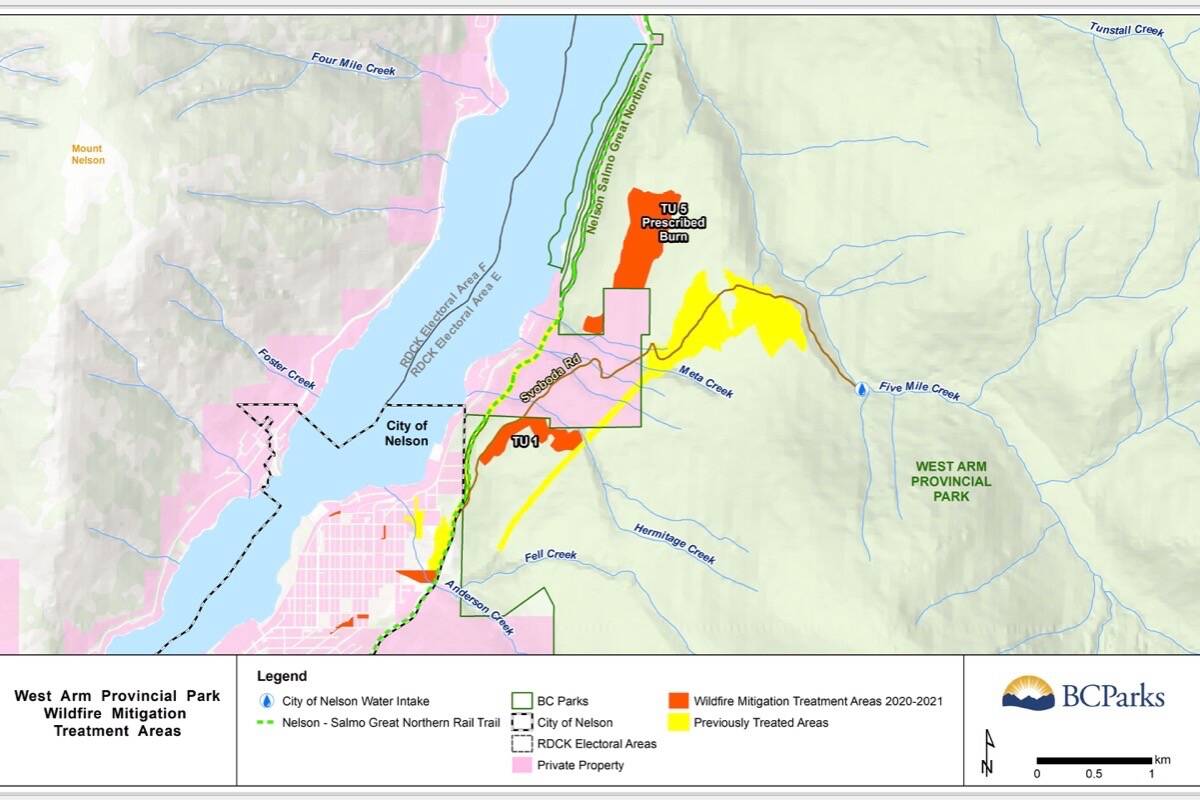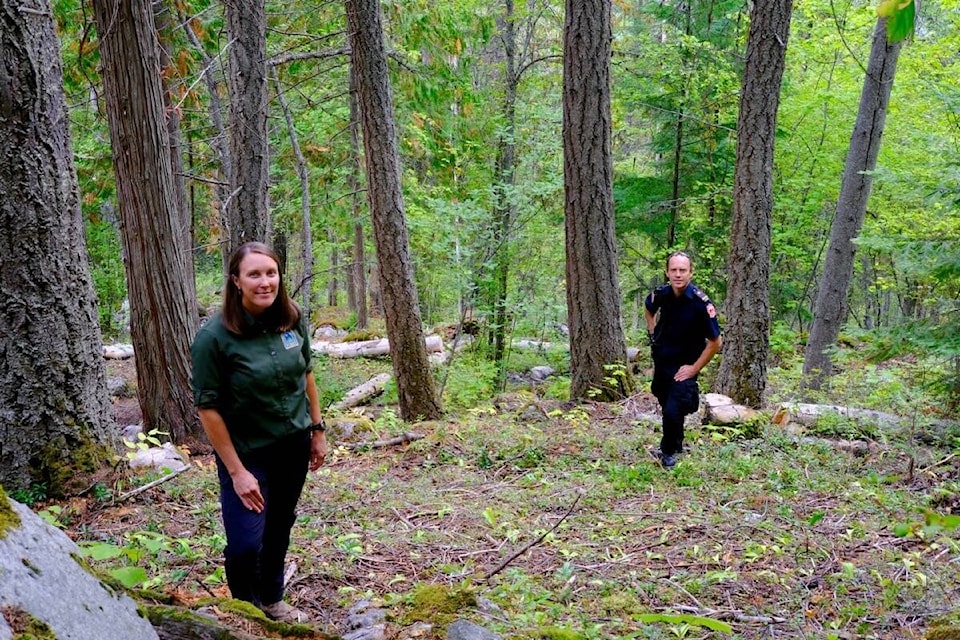The forests in West Arm Provincial Park are very flammable. So is the city of Nelson, which is adjacent to the park.
To protect one from a wildfire, we also need to protect the other.
About 85 per cent of Nelson’s drinking water comes from the park, and the water intake is located in the park. A fire started either in the city or the park could threaten the water source and the pipes that transport it off the mountain.
West Arm Park covers 26,199 hectares of forested land located along Kootenay Lake between Nelson and Harrop and the mountains behind. Its forests are not unlike many others in B.C. where wildfire fuel has built up because fire has been suppressed for decades.
Climate change adds more urgency to that already dangerous mix.
In 2017, BC Parks mapped the most risky areas of the park, especially those close to the communities of Harrop and Nelson, and have begun chipping away at creating shaded fuel breaks in the vicinity of both communities.
“Eventually it’ll form a large a large break between the park and the city where it’s anticipated that a fire could start and come into the park, or vice versa,” says Amanda Weber-Roy, Kootenay Conservation Specialist at BC Parks.”
The creation of these shaded fuel breaks is often referred to as wildfire fuel mitigation or fuel treatment.
Last year Weber-Roy identified four high-risk areas that would be treated in the upcoming year, based on the 2017 report. She told the Nelson Star this week that all four have now been done:
• hand treatment of 12.7 hectares about one kilometre up Svoboda Road
• prescribed burning on 22.3 ha that was treated last year in the Svoboda Road area
• mechanical treatment of 15.4 ha at Strickland Creek near Harrop
• hand treatment of 12.7 ha along Lasca Road near Harrop.
Hand treatment means retaining large dominant trees while thinning from below by removing small trees, pruning the retained trees on the lower levels, and removing wood debris from the ground. The result: a forest of large trees with no underbrush, small trees, or debris, and with an opened-up canopy that prevents tree-to-tree fire spread.
Mechanical treatment means using logging equipment to create the shaded fuel break, taking some timber out in the process. The stumpage fees for work done in the park are transferred back into the park.
The cost of hand treatments runs from $10,000 to $12,000 per hectare and $5,000 to $6,000 per hectare for mechanical treatments. These costs are higher than in some part of the province because of the park’s steep terrain.
Weber-Roy speaks proudly of the prescribed burning project.
“A really big highlight was we pulled off a 22.3 hectare burn, with 22 BC Wildfire Service personnel. That was done on Oct. 7. A lot of people in Nelson might remember that, seeing the smoke come up. It went very, very well.”
She said it’s a cost-effective way to do fuel treatments.
“It’s just you have to be pretty strategic in the areas where you can do that … there’s a lot of things you have to control for when you do a prescribed burn.”

Weber-Roy says BC Parks has so far achieved close to half of the fuel treatments recommended in the 2017 report for West Arm Park.
Starting this fall BC Parks will be doing a 16.4 hectare mechanical treatment on the Harrop side of the park. Also, in collaboration with the City of Nelson, they will perform hand treatments of 7.7 and 4.5 hectares around Nelson’s water intake infrastructure.
“It’s very important infrastructure,” says Weber-Roy, “and at the same time, we’re protecting the park values which are conservation, biodiversity and recreation.”
Related:
• New wildfire fuel mitigation work planned for Nelson area
• Reducing fire danger in West Arm Park
• Partnership builds road for Nelson wildfire protection
• Nelson at highest risk for wildfire, expert says
• Climate change and West Kootenay wildfires
bill.metcalfe@nelsonstar.com
Like us on Facebook and follow us on Twitter
